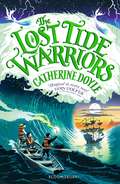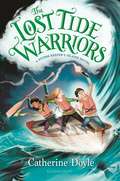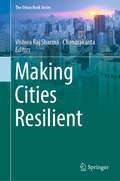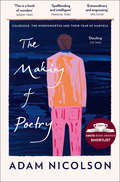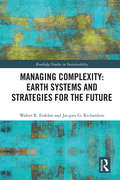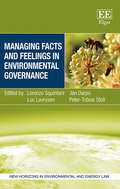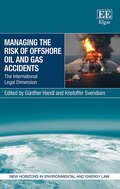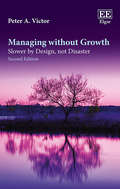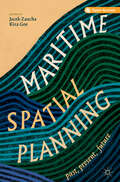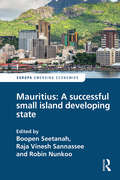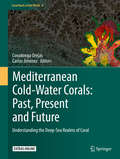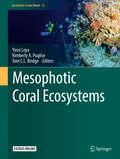- Table View
- List View
The Lost Orchard: A French chef rediscovers a great British food heritage
by Raymond BlancPICKED BY DIANA HENRY AS ONE OF THE TELEGRAPH'S COOKBOOKS OF THE YEAR 2019.'The legendary chef opens the door to a living library of lost varieties of heritage English fruit in a treasury of recipe and reflection.' Waterstones Weekly'Blanc set about the most thorough apple-tasting and cooking project I have heard of . . . [The Lost Orchard] condenses the highlights, his love letters to the forgotten apple breeds.' The Times'I began to dream about an orchard filled with thousands of fruit trees... Today we have an orchard with over 150 ancient varieties of apple. Each one has its heritage in a village or a county that used to thrive on that particular variety. They tell the story not only of what we have lost in Britain but also what we could regain.'Over the past seven years, Raymond Blanc has planted an orchard of 2,500 trees in the grounds of his hotel-restaurant in Oxfordshire. Yielding about 30 tonnes of fruit for his kitchen each year, it is full of ancient and forgotten varieties of British apples and pears, along with walnut trees, quince, medlars, apricots, nectarines, peaches, plums, damsons and cherries. A further 600 heritage fruit trees have been added from Raymond's home region of Franche-Comté in France. The Lost Orchard is a love letter to each of these varieties, complete with beautiful black and white drawings, photographs of Belmond Le Manoir and fascinating information and anecdotes about each fruit, along with recipes and stories.
The Lost Tide Warriors (The\storm Keeper Quartet #Bk. 2)
by Catherine DoyleIn the brilliant sequel to The Storm Keeper's Island, winner of the Books are My Bag Readers Award, Fionn Boyle finds himself at the heart of the fight for the island's survival.Fionn Boyle has been Storm Keeper of Arranmore for less than six months when thousands of terrifying Soulstalkers arrive on the island. The empty-eyed followers of the dreaded sorceress Morrigan have come to raise their leader and Fionn is powerless to stop them. The Storm Keeper's magic has deserted him and with his grandfather's memory waning, Fionn must rely on his friends Shelby and Sam to help him summon Dagda's army of merrows.But nobody else believes the ferocious sea creatures even exist. And how can he prove he's right without any magic? As Fionn begins his search for the lost army, the other islanders prepare for invasion. The battle to save Arranmore has begun.Praise for The Storm Keeper's Island: WINNER OF THE BAMB READER'S AWARD FOR MIDDLE GRADE SHORTLISTED FOR THE IRISH BOOK AWARDS'Magical in every way' EOIN COLFER'So magical and wild that it's like being swept away by the sea' KATHERINE RUNDELL
The Lost Tide Warriors (The Storm Keeper's Island Series #2)
by Catherine Doyle“Fans of Harry Potter or Percy Jackson can add Fionn Boyle as a generous and brave hero from the Emerald Isle.” – School Library Connection on The Storm Keeper's IslandThere is magic deep within Arranmore Island, and Fionn Boyle is beginning to discover how it has woven its way through generations of his family's history. But Arranmore is in trouble; evil sorceress Morrigan's soul stalkers have returned, giving rise to widespread fear and suspicion. Fionn wants to help, but the Storm Keeper magic passed down from his grandfather seems to have deserted him.Fionn sets out to summon the merrows, a vast army of sea creatures who may be his only chance. But how can he find them without the faintest idea of where to look? The battle to save Arranmore has begun.This gorgeously written, magical tale of family, bravery, and self-discovery is perfect for fans of Orphan Island and A Snicker of Magic.
Making Cities Resilient (The Urban Book Series)
by Vishwa Raj Sharma ChandrakantaAs the world has transformed, so have cities. Today, cities are home to 54 percent of the world’s population, and by the middle of this century that figure will likely rise to 66 percent. According to the United Nations (UN) Habitat I (1972), Habitat II (1996) and Habitat III (2016) summits, cities are facing many serious challenges, including growing inequality, security concerns and the worsening impacts of climate change. Uncontrolled urbanization has led to many problems (haphazard growth of areas, emergence of slums, inadequate water and power supply, poor sanitation, shortage of transport and other civic amenities, shrinking green spaces, pollution, crime, and urban disaster risks such as fire, flood, road and industrial accidents, etc.). Worldwide, communities at the international, national and local level are continuously working to improve human habitats. In order to make our planet more sustainable, the UN has moved from the Millennium Development Goals (MDG) to the Sustainable Development Goals (SDG). Among the latter, the aim of SDG 11 is to “…make cities and human settlements inclusive, safe, resilient and sustainable.” In light of these challenges, various terms have emerged to help understand urban issues. Visualizing the problem, the United Nations program “Making Cities Resilient” is focused on mitigating the disaster risk in urban areas. This book analyzes terms such as: sustainable, resilient, livable, inclusive, smart and world class city, which have emerged in the process of combating urban challenges in today’s world. The book addresses emerging concepts for cities, challenges and potentials, urban environments, health and planning/policies. Covering 14 large cities in India, as well as case studies from Japan, Singapore, Thailand, Malaysia, Poland and Sweden, it provides a regional dimension to and micro-level perspective on urban issues.
The Making of Poetry: Wordsworth, Coleridge And The Year Of Marvels
by Adam NicolsonSHORTLISTED FOR THE COSTA BIOGRAPHY AWARD 2019 Wordsworth and Coleridge as you’ve never seen them before in this new book by Adam Nicolson, brimming with poetry, art and nature writing. Proof that poetry can change the world.
Managing Complexity: Earth Systems And Strategies For The Future (Routledge Studies in Sustainability)
by Walter R. Erdelen Jacques G. RichardsonManaging Complexity: Earth Systems and Strategies for the Future introduces and explores systems and complexity in relation to near-synchronous world and environmental problems. These relate to but are not limited to water, biological diversity, worldwide climate change, trade and conflict, global migration and the quest for sustainable development. Complemented by discussion of the new era of the Anthropocene, its many manifestations, and Earth system properties such as planetary boundaries and tipping points this book offers practical suggestions for how a sustainable future for humanity can be realised. Specifically discussed in Managing Complexity: Earth Systems and Strategies for the Future are innovation, education and capacity building, application of the natural and social sciences and new paths towards sustainability based on industrial development and engineering, as well as in diplomacy and foreign aid. The book’s conclusions discuss the ambitious yet vital reforms the authors propose as routes to a sustainable existence. This book will be of great interest to students and scholars of sustainability, sustainable development and complexity theory.
Managing Complexity: Earth Systems and Strategies for the Future (Routledge Studies in Sustainability)
by Walter R. Erdelen Jacques G. RichardsonManaging Complexity: Earth Systems and Strategies for the Future introduces and explores systems and complexity in relation to near-synchronous world and environmental problems. These relate to but are not limited to water, biological diversity, worldwide climate change, trade and conflict, global migration and the quest for sustainable development. Complemented by discussion of the new era of the Anthropocene, its many manifestations, and Earth system properties such as planetary boundaries and tipping points this book offers practical suggestions for how a sustainable future for humanity can be realised. Specifically discussed in Managing Complexity: Earth Systems and Strategies for the Future are innovation, education and capacity building, application of the natural and social sciences and new paths towards sustainability based on industrial development and engineering, as well as in diplomacy and foreign aid. The book’s conclusions discuss the ambitious yet vital reforms the authors propose as routes to a sustainable existence. This book will be of great interest to students and scholars of sustainability, sustainable development and complexity theory.
Managing Facts and Feelings in Environmental Governance (New Horizons in Environmental and Energy Law series)
by Jan Darpö Lorenzo Squintani Luc Lavrysen Peter-Tobias StollFacts and feelings constitute a complex tension in modern science. Not only can public opinion deviate from scientific knowledge, but that knowledge itself can be lacunose or contradicting. Managing Facts and Feelings in Environmental Governance examines this internal friction, between the need to engage the public in the importance of environmental governance and the demand of professional expertise to address the issues that arise. This timely and insightful book acknowledges the growing role of behavioural science in the determination of environmental policy, regulation and decision-making, providing astute guidance to decision-makers regarding how to balance the needs of public participation procedures and professional expertise. Its multidisciplinary approach provides new insights in the field of public participation, enabling further analysis of environmental psychology, equality law and fundamental rights, and offers concrete guidance on how to approach natural science in court. Engaging with the role that the precautionary principle can play in balancing tensions between public and academic spheres, this book includes a state-of-the-art account of the precautionary approach under EU and international law. Combining law in action with academic approaches, this book is a must-read for scholars of environmental law, governance and regulation. It also offers valuable guidance for decision-makers and NGOs active in environmental protection, as well as environmental lawyers at national, European and international levels.
Managing the Risk of Offshore Oil and Gas Accidents: The International Legal Dimension (New Horizons in Environmental and Energy Law series)
by Günther Handl Kristoffer SvendsenThis book provides a comprehensive analysis of the international legal dimension of the management of the risk of accidents associated with offshore oil and gas activities. The editors cover the prevention and minimization of harm as well as the post-accident management of loss through liability and compensation arrangements and the processing of mass claims for compensation. While postulating a public international law framework for offshore oil and gas operations globally and exploring critical elements thereof, this book draws heavily on comparative assessments of domestic concepts and approaches, especially as regards offshore safety, liability for and compensation of harm, and mass tort claims procedures. With a team of experts from all over the world as contributing authors, the book offers a unique perspective on what remains a pressing international concern: The safety of offshore operations globally and the proper allocation of loss should a major accident occur. Government officials, international civil servants and academics in related fields will find the book a valuable resource.
Managing without Growth, Second Edition: Slower by Design, not Disaster
by Peter A. VictorTen years after the publication of the first edition of this influential book, the evidence is even stronger that human economies are overwhelming the regenerative capacity of the planet. This book explains why long-term economic growth is infeasible, and why, especially in advanced economies, it is also undesirable. Simulations based on real data show that managing without growth is a better alternative. The book tells how the recent idea of economic growth emerged from the idea of progress, itself only a few hundred years old. Many reasons for questioning growth are given based on an extensive review of the data as well as on conceptual and methodological considerations. The experience of growth in several countries is documented, compared and found wanting. Possibilities for managing without growth in high income economies are simulated with a new, comprehensive systems model with many novel features. Three 50 year scenarios are compared: a base case, an ambitious greenhouse gas reduction scenario, and a sustainable prosperity scenario with broader environmental objectives, reduced income inequality, shorter working hours and the cessation of economic growth. The book closes with a review of policies to make this scenario a reality. This updated book is a valuable resource for a broad academic audience, including students and researchers in economics, environmental studies, environmental science, business studies, and geography, as well as social justice groups and NGOs concerned with the environment, inequality and employment.
Manual for Survival: A Chernobyl Guide to the Future
by Kate Brown'Remarkable . . . grips with the force of a thriller' Robert MacFarlaneAn astonishing exposé of the aftermath of Chernobyl - and the plot to cover up the truthThe official death toll of the 1986 Chernobyl accident, 'the worst nuclear disaster in history', is only 54, and stories today commonly suggest that nature is thriving there. Yet award-winning historian Kate Brown uncovers a much more disturbing story, one in which radioactive isotopes caused hundreds of thousands of casualties, and the magnitude of this human and ecological catastrophe has been actively suppressed.Based on a decade of archival and on-the-ground research, Manual for Survival is a gripping account of the consequences of nuclear radiation in the wake of Chernobyl - and the plot to cover it up. As Brown discovers, Soviet scientists, bureaucrats, and civilians documented staggering increases in cases of birth defects, child mortality, cancers and a multitude of life-altering diseases years after the disaster. Worried that this evidence would blow the lid on the effects of massive radiation release from weapons-testing during the Cold War, scientists and diplomats from international organizations, including the UN, tried to bury or discredit it. Yet Brown also encounters many everyday heroes, often women, who fought to bring attention to the ballooning health catastrophe, and adapt to life in a post-nuclear landscape, where dangerously radioactive radioactive berries, distorted trees and birth defects still persist today.An astonishing historical detective story, Manual for Survival makes clear the irreversible impact of nuclear energy on every living thing, not just from Chernobyl, but from eight decades of radiaoactive fallout from weapons development.
Mapping Global Dynamics: Geographic Perspectives from Local Pollution to Global Evolution
by Gilbert AhamerThis book asks: What are the most suitable “mapping strategies” for detecting patterns of global dynamics?It adopts a spatial perspective when trying to understand “Global Dynamics” – and sets out to revolutionise the concept of space as such. Spatial views – on levels of increasing abstraction, reflection and self-organisation – are developed along eight case studies including air emissions, environmental radioactivity, deforestation, energy from biomass, land use change, food supply, water quality and cooperative interdisciplinary learning for global change.This book’s conceptual innovation consists in performing a transformation from “space & time” into “functional state space & evolutionary time” in order to better recognise the structural patterns of long-term global dynamics. A transdisciplinary readership in academia – including geography, philosophy, economics, global change and future research – that is interested in enlarging scientific concepts beyond classical borders – would be most welcome!
The Mar Chiquita Salt Lake (Córdoba, Argentina): Ecology and Conservation of the Largest Salt Lake in South America
by Enrique H. BucherThis book provides a comprehensive, updated syntheses of all the information available on Mar Chiquita, covering various aspects of the geography, geological history, biology and ecology of the site, as well as a detailed analysis of the current land-use patterns, environmental threats, and conservation issues. Mar Chiquita, located in the province of Cordoba, Argentina, is a protected wilderness area that includes South America’s largest saline lake and wetland. It has a very rich bird biodiversity, including three of the six species of flamingos that exist in the world, and high numbers of intercontinental migratory shorebirds. For this reason, the area has been declared an International Site by the Ramsar Convention on Wetlands of International Importance, and also a Site of Hemispheric Importance by the Western Hemisphere Shorebird Reserves Network. Largely unknown until very recently, particularly in terms of the English literature, the site is rapidly gaining international visibility, not only in terms of scientific research, but also as site of interest for the nature lovers around the globe. Written in a language accessible to the non-specialists, the book focuses on integrating the dynamic, functional processes in the ecosystem, while at the same time providing the necessary descriptive information. Accordingly, it is of interest to scientists from diverse disciplines interested in saline wetlands, as well as to students, managers, and the general public.
Marine Policy: An Introduction to Governance and International Law of the Oceans (Earthscan Oceans)
by Mark Zacharias Jeff ArdronThis book provides readers with a foundation in policy development and analysis, describing how policy, including legal mechanisms, are applied to the marine environment. It presents a systematic treatment of all aspects of marine policy, including climate change, energy, environmental protection, fisheries, mining and transportation. The health of marine environments worldwide is steadily declining, and these trends have been widely reported. Marine Policy summarizes the importance of the ocean governance nexus, discussing current and anticipated challenges facing marine ecosystems, human activities, and efforts to address these threats. This new, fully revised edition has been updated throughout, including content to reflect the recent advances in ocean management and international law. Chapters on shipping, energy/mining and integrated approaches to ocean management have been significantly reworked, plus completely new chapters on the United Nations Convention on the Law of the Sea, and the impacts of climate change have been added. Pedagogical features for students are included throughout. Aligned with current course offerings, this book is an ideal introduction for undergraduates and graduate students taking marine affairs, science and policy courses.
Marine Policy: An Introduction to Governance and International Law of the Oceans (Earthscan Oceans)
by Mark Zacharias Jeff ArdronThis book provides readers with a foundation in policy development and analysis, describing how policy, including legal mechanisms, are applied to the marine environment. It presents a systematic treatment of all aspects of marine policy, including climate change, energy, environmental protection, fisheries, mining and transportation. The health of marine environments worldwide is steadily declining, and these trends have been widely reported. Marine Policy summarizes the importance of the ocean governance nexus, discussing current and anticipated challenges facing marine ecosystems, human activities, and efforts to address these threats. This new, fully revised edition has been updated throughout, including content to reflect the recent advances in ocean management and international law. Chapters on shipping, energy/mining and integrated approaches to ocean management have been significantly reworked, plus completely new chapters on the United Nations Convention on the Law of the Sea, and the impacts of climate change have been added. Pedagogical features for students are included throughout. Aligned with current course offerings, this book is an ideal introduction for undergraduates and graduate students taking marine affairs, science and policy courses.
Maritime Spatial Planning: past, present, future
by Jacek Zaucha Kira GeeThis open access book is the first comprehensive overview of maritime or marine spatial planning. Countries across the globe are beginning to implement maritime spatial plans; however the authors of this collection have identified several key questions that are emerging from this growing body of MSP experience. How can maritime spatial planning deal with a complex and dynamic environment such as the sea? How can MSP be embedded in multiple levels of governance across regional and national borders – and how far does the environment benefit from this new approach? This book actively engages with the problems encapsulated in these questions, and explores possible solutions.Situated at the intersection between theory and practice, the volume draws together several strands of interdisciplinary research, reflecting on the history of MSP as well as examining current practice and looking towards the future. The authors and contributors examine MSP from disciplines as diverse as geography, urban planning, political science, natural science, sociology and education; reflecting the growing critical engagement with MSP in many academic fields. This innovative and pioneering volume will be of interest and value to students and scholars of maritime spatial planning, as well as planners and practitioners.
Master Recipes from the Herbal Apothecary: 375 Tinctures, Salves, Teas, Capsules, Oils, and Washes for Whole-Body Health and Wellness
by JJ PursellTrusted naturopath Dr. JJ Pursell shares 375 herbal recipes to support the daily health and wellness of every member of your household.
Mathematics of Planet Earth: Protecting Our Planet, Learning from the Past, Safeguarding for the Future (Mathematics of Planet Earth #5)
by Hans G. Kaper Fred S. RobertsSince its inception in 2013, Mathematics of Planet Earth (MPE) focuses on mathematical issues arising in the study of our planet. Interested in the impact of human activities on the Earth’s system, this multidisciplinary field considers the planet not only as a physical system, but also as a system supporting life, a system organized by humans, and a system at risk. The articles collected in this volume demonstrate the breadth of techniques and tools from mathematics, statistics, and operations research used in MPE. Topics include climate modeling, the spread of infectious diseases, stability of ecosystems, ecosystem services, biodiversity, infrastructure restoration after an extreme event, urban environments, food security, and food safety. Demonstrating the mathematical sciences in action, this book presents real-world challenges for the mathematical sciences, highlighting applications to issues of current concern to society. Arranged into three topical sections (Geo- and Physical Sciences; Life Sciences, Ecology and Evolution; Socio-economics and Infrastructure), thirteen chapters address questions such as how to measure biodiversity, what mathematics can say about the sixth mass extinction, how to optimize the long-term human use of natural capital, and the impact of data on infrastructure management. The book also treats the subject of infectious diseases with new examples and presents an introduction to the mathematics of food systems and food security. Each chapter functions as an introduction that can be studied independently, offering source material for graduate student seminars and self-study. The range of featured research topics provides mathematical scientists with starting points for the study of our planet and the impact of human activities. At the same time, it offers application scientists a plethora of modern mathematical tools and techniques to address the various topics in practice. Including hundreds of references to the vast literature associated with each topic, this book serves as an inspiration for further research.
Mauritius: A successful Small Island Developing State (Europa Perspectives: Emerging Economies)
by Boopen Seetanah Raja Vinesh Sannassee Robin NunkooThe economic upturn and performance of Mauritius is a far cry from predictions made in the 1960s. The island’s remarkable economic performance since the 1980s can been attributed to a multitude of factors instrumental to the success of the economy, including structural reforms, outward looking export orientated strategies, diversification in the manufacturing, tourism and financial services sectors amongst others, sound economic governance and institutions, and significant investment in human capital. This book attempts to provide a detailed analysis of the various key ingredients which have helped to propel Mauritius to its current status. The various chapters provide important readings for both academics and policymakers, with the final chapter providing key policy strategies which the government needs to implement to help Mauritius graduate to the next level of development: namely to that of a high-income economy and, in moving out of the middle-income trap, laying the foundations for future growth and shared prosperity in the light of both domestic challenges and global constraints.
Mauritius: A successful Small Island Developing State (Europa Perspectives: Emerging Economies)
by Boopen Seetanah Raja Vinesh Sannassee Robin NunkooThe economic upturn and performance of Mauritius is a far cry from predictions made in the 1960s. The island’s remarkable economic performance since the 1980s can been attributed to a multitude of factors instrumental to the success of the economy, including structural reforms, outward looking export orientated strategies, diversification in the manufacturing, tourism and financial services sectors amongst others, sound economic governance and institutions, and significant investment in human capital. This book attempts to provide a detailed analysis of the various key ingredients which have helped to propel Mauritius to its current status. The various chapters provide important readings for both academics and policymakers, with the final chapter providing key policy strategies which the government needs to implement to help Mauritius graduate to the next level of development: namely to that of a high-income economy and, in moving out of the middle-income trap, laying the foundations for future growth and shared prosperity in the light of both domestic challenges and global constraints.
Media and Water: Communication, Culture and Perception
by Joanne Garde-HansenAs flooding, drought and water scarcity become more pronounced due to climate change, so the way in which these events are presented in the media assumes greater significance. In particular, the media plays an important role in shaping the public perception and understanding of water issues, and debates around extreme weather events more generally. Joanne Garde-Hansen's book offers a sustained and comprehensive exploration of media representations of water. Drawing on a wide range of media – including newspapers, digital, photography, radio, television and video, as well as empirical research on media and memory – she examines how drought, flooding and water management have been portrayed in the media, both historically and in the contemporary world. The use of the media by water institutions to manage public perceptions and the use of digital media by the public to engage with water companies is also included. A particular feature of the book is an examination of water and gender in developed nations. One of the first books to look at media representations of water, this pioneering work provides valuable insights for both scholarly and professional water research.
Mediterranean Cold-Water Corals: Understanding the Deep-Sea Realms of Coral (Coral Reefs of the World #9)
by Covadonga Orejas Carlos JiménezWhat do we know about Mediterranean Cold (Deep)-Water coral ecosystems? In this book, specialists offer answers and insights with a series of chapters and short papers about the paleoecology, biology, physiology and ecology of the corals and other organisms that comprise these ecosystems. Structured on a temporal axis—Past, Present and Future—the reviews and selected study cases cover the cold and deep coral habitats known to date in the Mediterranean Basin. This book illustrates and explains the deep Mediterranean coral habitats that might have originated similar thriving ecosystems in today’s Atlantic Ocean.
Meet the Food Radicals
by F. Bailey Norwood Tamara L. MixThe food system has changed considerably in the last century. Horsepower was replaced by machine, better crop breeding programs helped usher in the Green Revolution, and problems of malnutrition began to run parallel with those of obesity. Despite changes, many of the problems we face remain the same. Farms continue to lose soil, and low income households still have difficulty acquiring healthy food. Add to these challenges a host of new ones. Globalization has caused some agricultural communities to feel threatened. Everyone recognizes problems of malnutrition, obesity and food sustainability, but many disagree on solutions. One thing is certain: confronting both familiar and new challenges will lead to radical changes in the food system. Though the exact form of radical change is unknown, this book looks to a host of candidates by interviewing the people who champion them. We are winning the battle against soil erosion through new no-till farming methods. Progress is being made in food sustainability by a spectrum of new innovations, but also a return to traditional farming techniques. New innovations include robots on the farm, advances in molecular biology, and alternative protein sources. As we embrace the farming strategies of our ancestors, we see farms returning to polycultures, local food systems, and food sovereignty. This book gains insight from interviews with twenty-seven individuals who are either creating or proposing radical changes in how food is produced and distributed. An eclectic group ranging from farmers to activists to spiritual gurus, they are the most interesting people you have never met. By getting to know each "radical" personally we can better access their voices and visions to understand both the problems and likely solutions to today's most pressing food problems.
Mesophotic Coral Ecosystems (Coral Reefs of the World #12)
by Yossi Loya Kimberly A. Puglise Tom C.L. BridgeThis book summarizes what is known about mesophotic coral ecosystems (MCEs) geographically and by major taxa. MCEs are characterized by light-dependent corals and associated communities typically found at depths ranging from 30-40 m. and extending to over 150 m. in tropical and subtropical ecosystems. They are populated with organisms typically associated with shallow coral reefs, such as macroalgae, corals, sponges, and fishes, as well as specialist species unique to mesophotic depths. During the past decade, there has been an increasing scientific and management interest in MCEs expressed by the exponential increase in the number of publications studying this unique environment. Despite their close proximity to well-studied shallow reefs, and the growing evidence of their importance, our scientific knowledge of MCEs is still in its early stages. The topics covered in the book include: regional variation in MCEs; similarities and differences between mesophotic and shallow reef taxa, biotic and abiotic conditions, biodiversity, ecology, geomorphology, and geology; potential connectivity between MCEs and shallow reefs; MCE disturbances, conservation, and management challenges; and new technologies, key research questions/knowledge gaps, priorities, and future directions in MCE research.
Microbes and Enzymes in Soil Health and Bioremediation (Microorganisms for Sustainability #16)
by Ashok Kumar Swati SharmaMicrobial enzymes play a vital role in maintaining soil health and removing pollutants from contaminated land. Soil microflora is closely associated with maintaining soil fertility, and the use of chemical pesticides, fertilizers and other volatile sprays in agriculture threatens the health ofthe microbial population in the soil. Every single particle of healthy soil contains millions of bacteria, which interact with the nutrients available, sustaining the nutrient cycle and making this microflora an essential component of life on earth. How do microbes help in the nutrient cycle? Either by intracellular digestion of macromolecules and converting these into smaller units in their metabolic pathways, or by secreting enzymes into the extracellular environment to facilitate the conversion of complex macromolecules into micro-molecules that can be easily absorbed by other living species. To meet demands for energy and food for the growing global population, it is important to protect agricultural land from contamination and maintain its productivity. Heavy metal ions from contaminated land canenter crops, fish or aquatic organismsvia contaminated water, and theseare then taken up by the human body, where they can accumulate and alter the normal microflora.The microbiological component of the soil is ahighly complex system and is still not fully understood. How do microbes survive in the changing physicochemical environment of soil?. This book helps readers understand the mechanism, various routes of microbialsoil remediation, the interactionsof different genera, and how microbial enzymes support the sustainable restoration of healthy soil.

